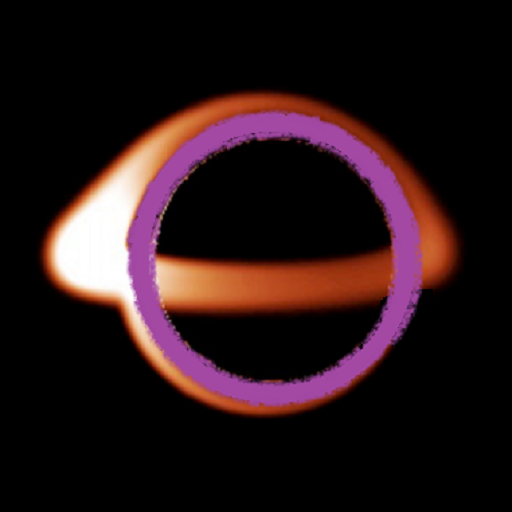A black hole is a singularity – a point where laws of physics as we know them cease to exist. It is where mathematics approach infinity. The idea of a body so massive that even light could not escape was first proposed by geologist John Michell in 1783. It was also predicted with Einstein’s equations by Karl Schwarzschild in 1916. According to general relativity, a sufficiently compact mass will deform space-time to form a black hole. A black hole is an object of extreme density, with gravitational attraction so strong that even light cannot escape. Because light cannot escape, black holes were not observed in space until indirect observations were made in 1971. In the Cygnus X-1 binary system (two objects orbiting each other), one object was too dense to be a neutron star. Thus, by observing the effects on surrounding objects, black holes have been observed.
Black holes are thought to form when a star collapses in on itself after going supernova. This is known as a stellar black hole. Black holes grow by accumulating matter as they consume it. They can also grow by merging with other black holes. Supermassive black holes are much larger than stellar black holes and have been observed in the center of every galaxy. Recent evidence suggests that supermassive black holes grow through the process of galactic mergers, rather than swallowing up smaller amounts of matter.
A black hole consists of the singularity and an event horizon, or point of no return. This is where matter and light may enter but can never emerge. They often have an outflowing jet (or two) of energetic particles, believed to be powered by the black hole’s spin. Supermassive black holes are surrounded by pancake-like accretion disks, formed as their gravity pulls matter inward. General relativity predicts the faster the black hole spins, the closer the accretion disk lies.
In the late 20th century theoretical physicists predicted what happens to matter as it enters the black hole, and the information paradox was created. Basically, if matter enters but does not leave, information is lost. This violates laws of physics, so two theories competed. Stephen Hawking theorized low-level energy emanating from the black hole (Hawking radiation), but this has never been observed. Using string theory, Leonard Susskind explained that information is not lost because it is spread evenly across the event horizon. In 2010’s The Grand Design, Hawking conceded, as he endorsed M-theory (the latest adaptation of several string theories). As black holes age, a process of quantum mechanics known as entanglement occurs on both sides of the event horizon. This causes the information to build up inside the black hole, while still retaining the information in the system.
In 2013, several key characteristics of black holes were measured using NASA’s Nuclear Spectroscopic Telescope Array (NuSTAR) and the European Space Agency’s XMM-Newton. The findings resolve a long-standing debate and will lead to a better understanding of how black holes and galaxies evolve. Using X-ray data, a black hole’s spin rate can be estimated. To do this, matter is traced as it swirls inward using X-rays emitted from regions very close to the black hole. The observed radiation is warped and distorted by particles’ motions and the black hole’s incredibly strong gravity. The closer the accretion disk, the more gravity will warp X-ray light streaming off the disk. Now our technology can conclusively measure the spin of the supermassive black hole, which is fundamental to understanding its history and that of its galaxy.
Sources:
space.com/15421-black-holes-facts-formation-discovery-sdcmp.html
en.wikipedia.org/wiki/Black_hole
imagine.gsfc.nasa.gov/docs/ask_astro/answers/971124b.html
nasa.gov/mission_pages/nustar/news/nustar20130227.html
scitechdaily.com/new-insights-into-the-life-and-death-of-black-holes/

